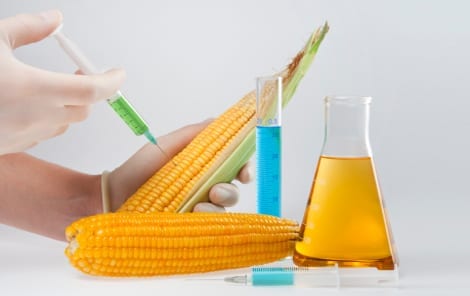The demand to label GMOs (Genetically Modified Organisms) is picking up steam in the United States, both on the state and national front.
Genetically Modified Organisms are experimental plants and animals that have been genetically engineered in a laboratory with DNA from other plants, animals, bacteria, and viruses.
GMOs exist for two main reasons:
1. Seed producers modify their seed to make them resistant to their brand of herbicide.
2. Seed producers modify plants to contain built-in pesticides.
As of 2010, GMOs constituted 86% of the Corn, 90% of the Canola, 93% of the Soy, and 93% of the Cotton grown in the U.S.
Although GMO ingredients are found in 80% of packaged foods in the U.S., they have not been proven safe as the long term consequences of GMOs on our health and environment have not been adequately investigated. 40 countries, including Australia, Japan, China, Brazil, Mexico, and all of the European Union nations, either have significant restrictions or outright bans on the production of GMOs because they are not considered proven safe.
At this time neither Canada or the United States require the labeling of genetically engineered food. But that is starting to change with political movements on the state and national level and non-profit organizations like the Non-GMO Project giving this issue a voice.
California is the first state to attempt a ballot initiative requiring the mandatory labeling of genetically engineered food through the California Right to Know campaign. Vermont and Florida are planning on pursuing the 2013 ballot session, with ten other states potentially looking into it.
Nationally, Just Label It is a coalition of more than 500 organizations working together at the federal level for mandatory labeling of genetically engineered food. Over one million people have signed the online petition contacting the FDA and telling them United States citizens have a right to know what’s in our food (although in the last couple of days the FDA has chosen to only count them as 394 separate comments because their rules say that if thousands and thousands of people sign a single petition or submit the same form letter, they are only counted as one collective comment).
On the public education front, the Non-GMO Project is a non-profit organization committed to preserving and building sources of Non-GMO products and educating consumers. Their website offers a database of brands and products that have been verified by the Non-GMO Project as GMO free.
Yes, all this is a lot to take in, especially for someone who’s never even heard of GMO. So if you want to understand the GMO issue a little more San Diego artist Rob Herring created a catchy little ditty “Question What’s Inside,” that helps explain it in simple basic terms:

Kat Thomas is a Renaissance Foodie. So far she has been: a cook, a personal chef, a critic, a blogger, a caterer, a server, and a home gardener. When she is not writing or cooking you can usually find her at one of Santa Monica’s four farmers market talking to the local growers.





